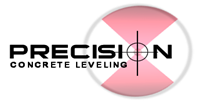PRECISION CONCRETE LEVELING IS THE PREMIER CONCRETE LIFTING, LEVELING AND STABILIZATION COMPANY IN MANITOBA. IN ADDITION TO BEING A LIMESTONE-BASED COMPANY PROVIDING AN AFFORDABLE ALTERNATIVE TO CONCRETE SLAB REPLACEMENT AND SPRAY FOAM JACKING. PRECISION CONCRETE LEVELING WORKS WITH HOMEOWNERS AND BUSINESSES WHO HAVE UNEVEN CONCRETE INCLUDING SIDEWALKS, DRIVEWAYS, LANDINGS, APPROACHES, GARAGE FLOORS, PATIOS, POOL DECKS, WAREHOUSE FLOORS, VOIDFILLING AND STABILIZATION. |
PROUDLY SERVING: WINNIPEG, STONEWALL, SELKIRK, OAK BLUFF, HEADINGLEY, DUGALD, ST. FRANCOIS XAVIER, EAST ST. PAUL, LORETTE, OAKBANK, LA SALLE, WEST ST. PAUL, BIRDS HILL, BEAUSEJOUR, SANFORD AND SURROUNDING SOUTHERN MANITOBA AREAS |
